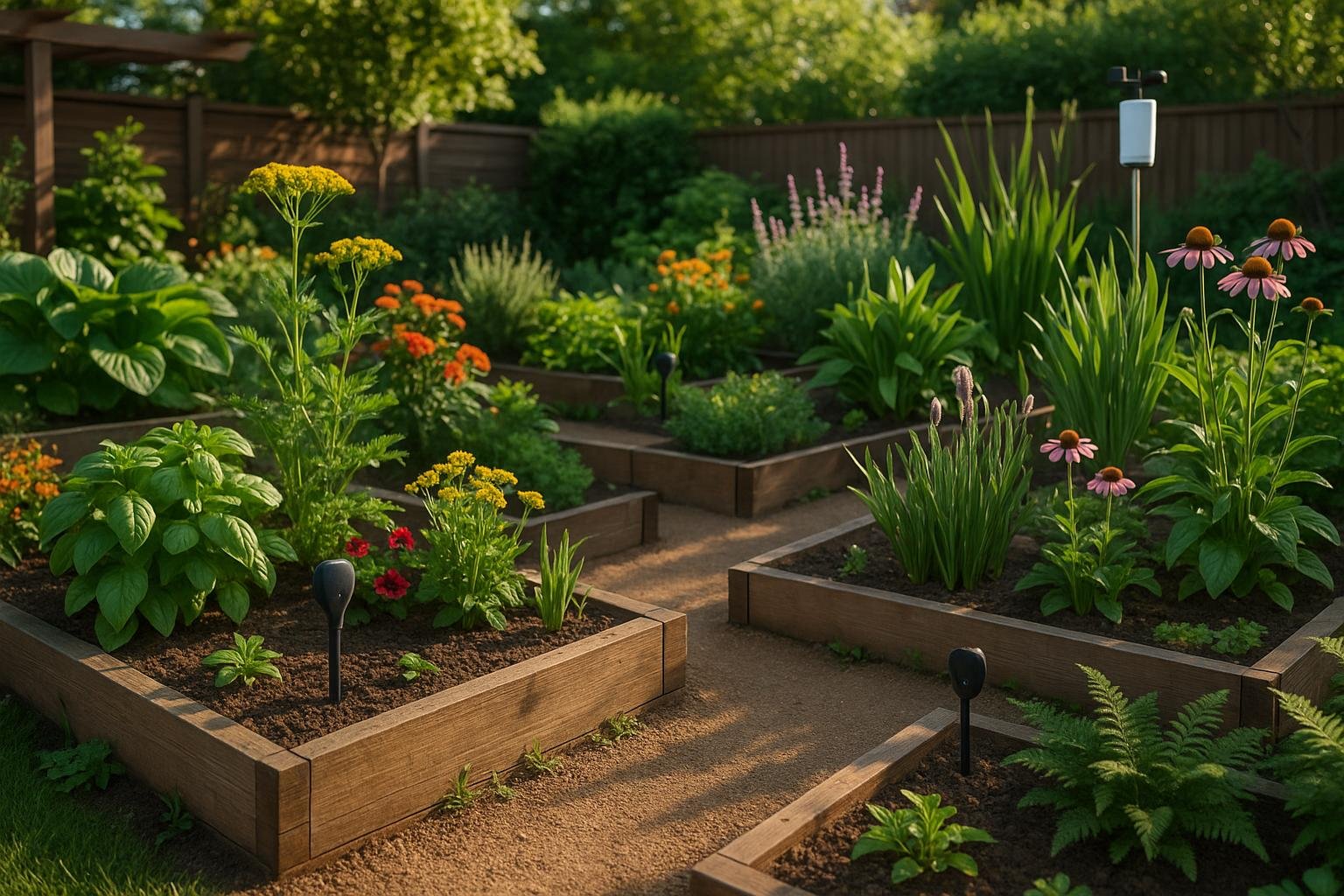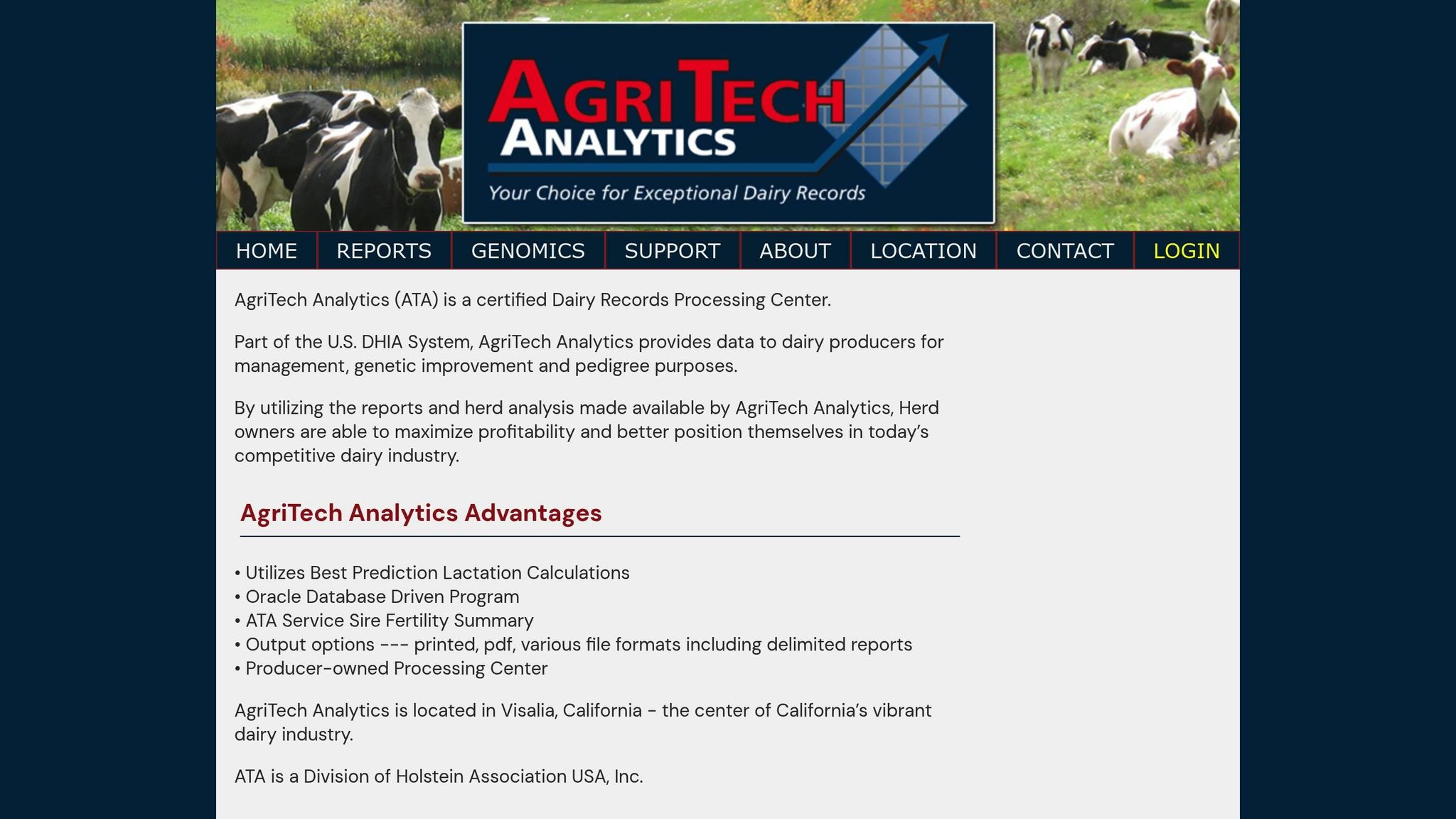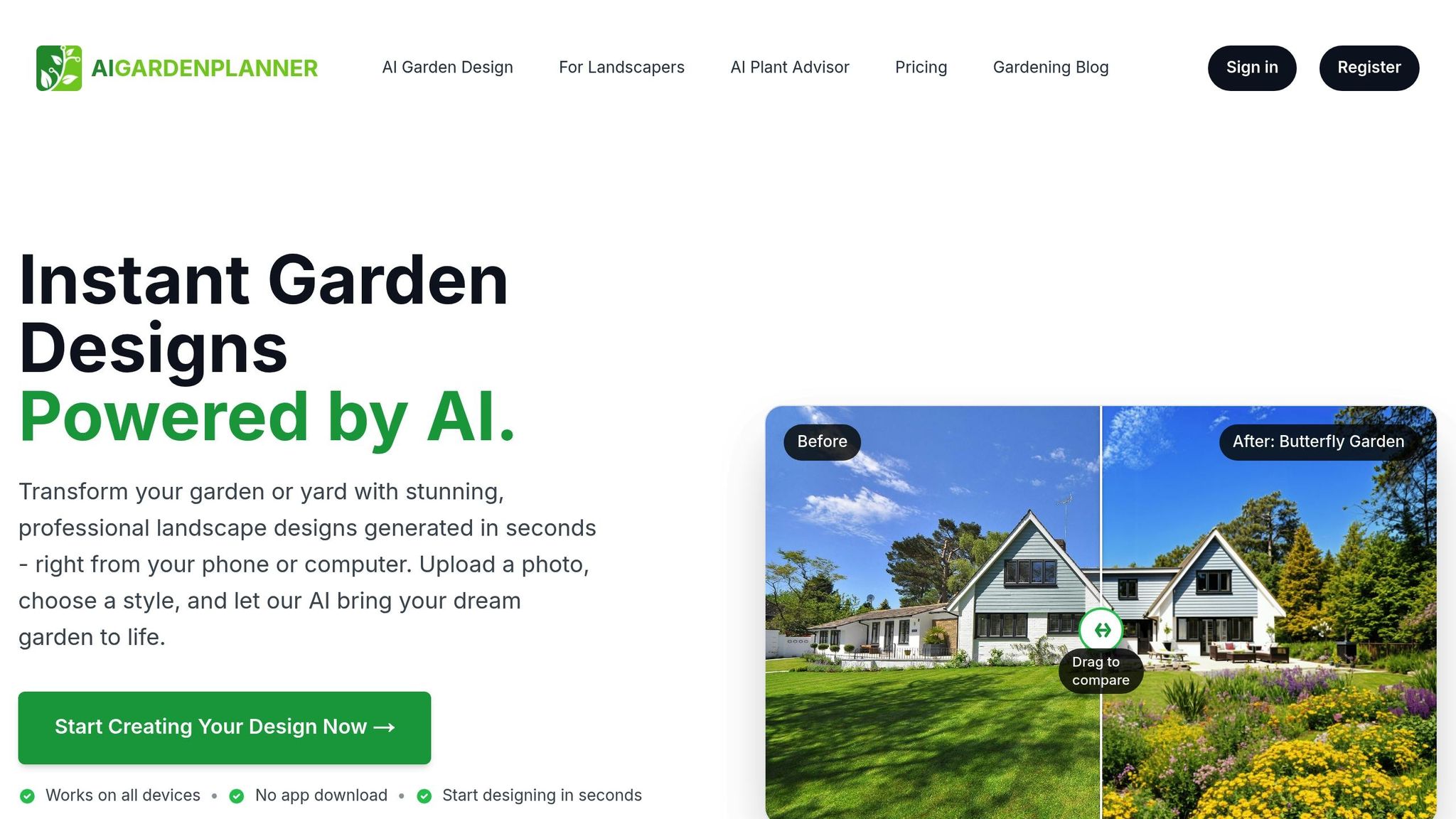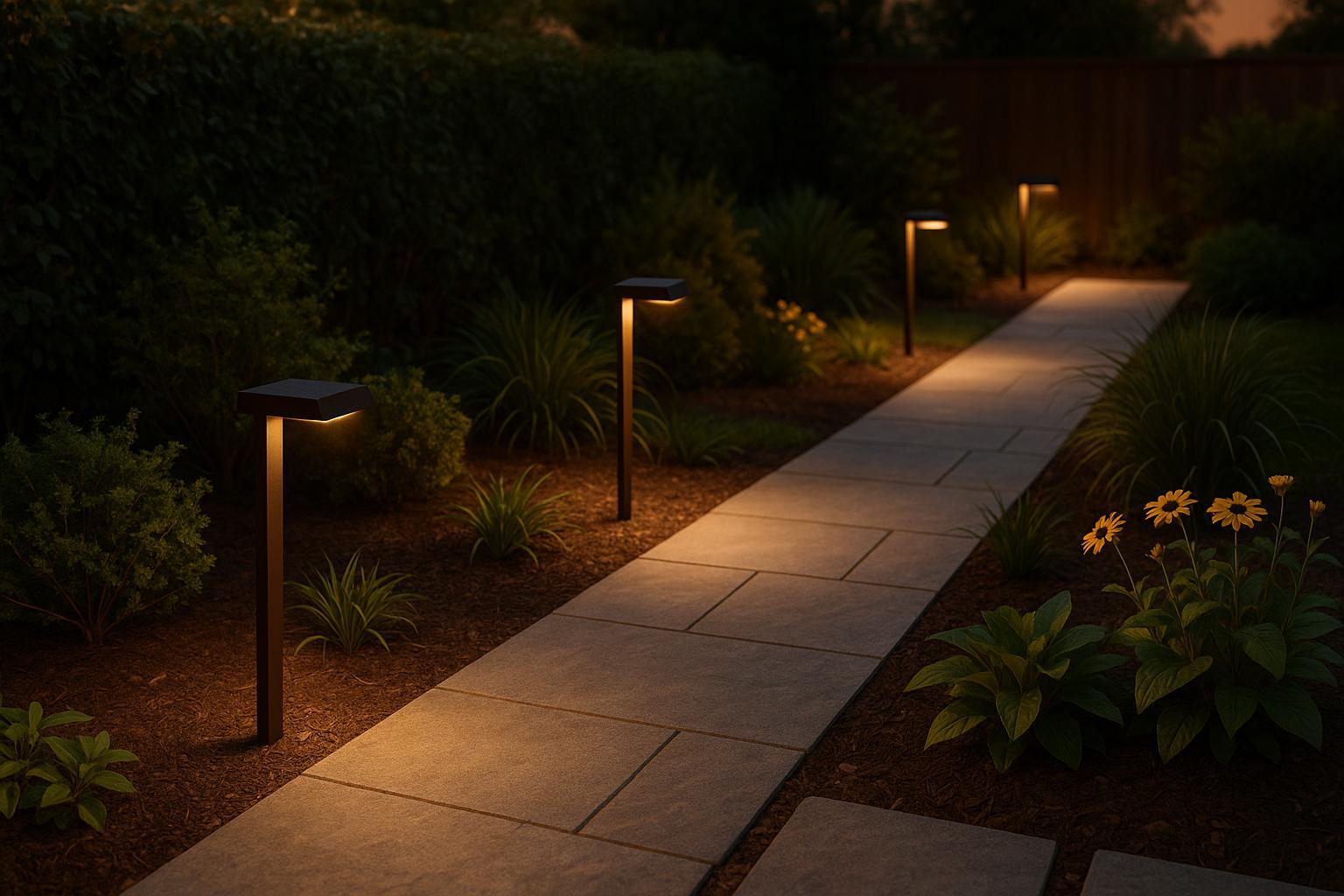AI Data Analytics for Climate-Resilient Gardens

AI is transforming gardening by helping you tackle climate challenges like unpredictable weather, pests, and changing growing seasons. With tools like AIGardenPlanner, you can make smarter decisions about plant choices, watering, pest management, and more - all based on real-time data and predictive insights. Here's what you need to know:
- Pest and Disease Management: AI detects issues early, sometimes weeks before visible signs, reducing crop losses by up to 30%.
- Resource Efficiency: Smart irrigation systems cut water use by 20–30%, while AI-guided pest control reduces pesticide usage by 30–40%.
- Predictive Analytics: AI uses weather and soil data to forecast risks like droughts, helping you prepare and protect your garden.
- AI Tools: Platforms like AIGardenPlanner provide tailored plant suggestions, pest alerts, and garden designs based on your location and preferences.
These tools make gardening more efficient, eco-friendly, and tailored to your needs, ensuring your garden thrives despite climate challenges. Let’s explore how AI can reshape your gardening experience.
How AI helps farmers adapt to climate change: the story of AgriTech Analytics (short version)


How AI Data Analytics Changes Garden Management
AI data analytics is reshaping how gardeners care for their plants by transforming raw environmental data into practical, easy-to-understand advice. For gardeners in the US, this means smarter decisions about watering schedules, planting choices, and safeguarding gardens from pests and diseases. By organizing and analyzing data, AI helps streamline garden care and boosts efficiency.
Steps in AI-Driven Data Analytics
The process of AI-driven data analytics begins with gathering information. Sensors collect data on soil moisture, temperature, and other environmental factors, while weather stations and cameras monitor plant health and potential pest activity. This collected data forms the foundation for AI analysis.
Next, the data is stored and organized in systems that maintain historical records. Raw information, such as sensor readings and images, is then converted into standardized formats, making it easier for AI algorithms to process. During analysis, machine learning models identify trends, detect unusual patterns, and compare current conditions against past data to flag potential issues.
Finally, the results are delivered to gardeners through simple, user-friendly platforms. These insights might include tailored watering schedules, pest alerts, or fertilizer recommendations based on soil conditions. By acting on this information, gardeners can make real-time adjustments, ensuring their gardens remain healthy and prepared for changing environmental conditions.
Better Pest and Disease Management
AI offers a significant advantage in spotting pest and disease problems early - often before they are visible to the human eye. For example, an AI system identified fungal disease three weeks earlier than manual scouting [5]. Using advanced tools like AI-powered cameras and sensors, pest detection on cotton farms has achieved accuracy rates between 70% and 98% [1]. Similarly, models like U-Net have reached 97.13% accuracy in detecting wheat yellow rust, and Mask R-CNN has achieved a near-perfect Intersection over Union score of 0.96 for identifying northern leaf blight in maize [4].
AI doesn’t stop at detection; it also predicts outbreaks by analyzing weather patterns, crop conditions, and pest cycles [2]. This predictive approach helps gardeners prepare for potential threats based on environmental factors, rather than waiting for visible damage. Beyond early detection, AI ensures efficient use of resources by tailoring interventions to the garden's specific needs.
Resource Optimization with AI Insights
AI-powered tools enable gardeners in the US to use water, fertilizers, and pesticides more efficiently, reducing waste and improving sustainability. For instance, smart irrigation systems use soil sensors and weather data to determine exactly when and where water is needed. This precision can improve irrigation efficiency by 15–25% and cut water usage by 20–30% [8]. By creating customized watering schedules, these systems prevent overwatering and save resources.
When it comes to fertilizers, AI analyzes crop health and applies nutrients only where deficiencies exist. Satellite-based monitoring combined with AI can reduce fertilizer and pesticide use by 18–25% [8], ensuring plants get just the right amount of nutrients for healthy growth.
AI also minimizes pesticide use. Smart pest control systems powered by AI can reduce pesticide application by 30–40% [8]. For example, a smart sprayer that uses image-based pattern recognition has cut herbicide use by up to 90% compared to traditional methods [7]. By optimizing resource use, AI helps gardeners maintain productive gardens while reducing their environmental footprint.
AI-Powered Tools for Pest and Disease Detection
AI technology is transforming how gardeners in the U.S. detect and manage pests and diseases. By combining image recognition with predictive analytics, these tools allow gardeners to identify problems early, reduce reliance on chemicals, and keep their gardens healthier with precision-based solutions.
Image Recognition for Pest and Disease Identification
With AI, identifying garden issues has never been easier. Gardeners can upload a photo, and within seconds, AI algorithms - trained on massive datasets - can pinpoint pests, diseases, nutrient deficiencies, or stress factors [9]. This rapid analysis is a game-changer for garden management.
Take, for example, the "Plant Village" app from Penn State University. It uses machine learning to analyze user-uploaded images and identify plant pests and diseases [2]. Similarly, "DeepAgro" by AgShift employs deep learning to detect pest infestations, diseases, and other crop issues through detailed image analysis [2].
These tools are impressively accurate, especially when it comes to visible pests, with identification rates of 80–90% [9]. Some apps can even recognize thousands of plant species and diseases with over 90% accuracy, all while cutting disease detection time by up to 80% compared to manual methods [10].
For the best results, gardeners should take photos in natural light, capture multiple angles, and enable location services. Adding details like wilting, unusual odors, or symptom progression can further improve diagnostic accuracy [9].
Weather and Climate Data Integration
AI tools become even more powerful when they incorporate weather and climate data to predict pest outbreaks before they happen. By analyzing weather patterns, pest life cycles, and other environmental factors, these systems create detailed prediction models [2]. This allows gardeners to act proactively rather than waiting for visible damage.
Weather conditions like temperature, humidity, rainfall, and seasonal changes play a big role in pest and disease development. AI excels at analyzing these factors to anticipate outbreaks [11]. For instance, Semios, in collaboration with Google, developed a precision farming platform that reduced a moth population by 1.5 billion, significantly boosting almond production [7]. In Australia, the CSIRO's "Pest Forecast" platform uses machine learning to predict pest activity based on weather forecasts and historical data, enabling preventative measures [2].
"We've built the biggest database of pictures of insects in the world, which allows us to really use modern AI-based computing vision most optimally." – Matej Štefančič, CEO of Trapview [12]
This predictive approach lets gardeners plan targeted interventions based on environmental conditions, preventing problems before they escalate.
Benefits for US Gardeners
AI-powered tools offer U.S. gardeners a range of advantages, particularly in reducing chemical use while keeping gardens healthy. These systems enable targeted pesticide application, cutting chemical use by 50–90% compared to traditional blanket spraying methods [13].
The environmental impact is equally significant. With 64% of global agricultural land at risk of pesticide pollution [12], AI tools help minimize pesticide runoff and soil contamination by enabling precise treatments [13].
Several companies are leading this charge. Farmsense, a California-based startup, uses optical sensors and machine learning in its FlightSensor system to detect and track insects in real time, allowing for immediate action. Farmsense recently won a $750,000 prize in the 2023 Radicle Inclusion Challenge presented by Nutrien [12].
Trapview offers AI-powered insect traps equipped with pheromones and cameras. These traps capture photographic data, which is processed in the cloud to generate detailed reports and actionable recommendations for gardeners [12].
For U.S. gardeners, these tools mean better yields, lower maintenance costs, and a reduced environmental footprint. AI systems provide diagnoses in seconds, compared to the hours or days required by traditional methods [14]. This speed helps prevent small issues from snowballing into major infestations, making garden care more efficient and eco-friendly.
And it doesn’t have to break the bank. For example, in 2017, students from VIT-Chennai Campus created "Kishan Know", a pest prediction system using Intel's OpenVINO™ technology that costs less than $1 to implement [12]. By analyzing satellite imagery and sensor data, the system detects plant diseases through changes in plant temperature, proving that AI tools can be both accessible and effective for home gardeners.
If you're looking to integrate AI into your garden, consider using AIGardenPlanner. This platform offers personalized plant recommendations based on your location, climate, and preferences, along with detailed guides to help you manage pests and diseases tailored to your garden's needs.
sbb-itb-4d6a8dd
🚀 Ready to Reinvent Your Garden?
Join thousands of homeowners who have transformed their gardens using our AI design tool. Upload one photo to explore endless possibilities.
Get your AI garden designs →Using Predictive Analytics for Climate Adaptation
Predictive analytics is transforming the way gardeners approach climate challenges. Instead of waiting for problems to arise, this technology helps gardeners take preemptive action to protect their plants and create optimal growing conditions based on scientific insights.
Forecasting Risks with Historical and Real-Time Data
By blending historical climate records with real-time environmental data, predictive analytics offers gardeners a powerful tool for making informed decisions. Using statistical algorithms and machine learning, this approach identifies patterns and trends that can forecast everything from drought risks to the best times for planting [15].
For U.S. gardeners, this means tailored advice based on local conditions like temperature, rainfall, humidity, and soil quality. These predictions can guide decisions on when to plant and even recommend specific crops suited to upcoming weather patterns [17]. For instance, the system might suggest drought-tolerant plants in regions expecting dry spells or provide precise planting windows to maximize yields.
Caroline Staub from the University of Florida Institute of Food and Agricultural Sciences highlights the value of this technology:
"Growers kept asking us, 'What is the probability of getting an extreme weather event on my farm when my crop is ready to harvest'" [18].
The benefits are already evident. Farmers using AI-driven weather prediction tools have seen a 15% boost in crop yields and cut crop losses by 20% [17]. These models also assist in creating efficient irrigation plans, reducing water waste in areas prone to drought [16]. Such precise forecasting empowers gardeners to prepare effectively for extreme weather, minimizing losses and maximizing growth potential.
Preparing for Extreme Weather Events
Predictive analytics doesn’t just warn about potential risks - it helps gardeners actively prepare for them. By analyzing factors like vegetation, weather, and terrain, these models provide actionable insights. For example, in Australia, predictive analytics helps manage wildfires by forecasting fire behavior and directing resources to the most vulnerable areas [15]. Similarly, NOAA uses climate models to predict hurricane paths and intensities, aiding local governments in planning evacuations and disaster response [15]. On a more urban scale, Singapore leverages predictive analytics to identify flood-prone areas, significantly reducing flooding incidents in its cities [15].
This technology’s precision is remarkable. AI systems can predict drought damage with a resolution as fine as 20 meters, enabling targeted interventions [19]. Gardeners can take advantage of these insights by installing flood barriers, selecting drought-resistant plants, or fine-tuning irrigation systems. Shifting from reactive to proactive strategies ensures better outcomes, whether it’s protecting crops or managing water resources effectively [15].
For personalized guidance, platforms like AIGardenPlanner provide location-specific recommendations, helping gardeners adapt their practices to changing climates and safeguard their green spaces.
How to Implement AI Data Analytics in Your Garden
Starting with AI-powered gardening might seem daunting, but it’s easier than you think. With tools like AIGardenPlanner, along with the right sensors, you can turn your garden into a smart, data-driven system that adapts to environmental challenges and supports healthier plants.
Setting Up Sensors and Collecting Data
The heart of AI gardening lies in gathering accurate data about your garden. Soil moisture sensors are a must-have, as most plants begin to suffer when soil water depletion hits 30-50% of its holding capacity [20]. Smart plant sensors can track real-time data like soil moisture, temperature, light levels, and even plant health. Many of these connect to mobile apps, allowing you to monitor your garden remotely [21][23].
When picking sensors, consider the specific needs of your plants. For outdoor gardens, choose weather-resistant models that can handle seasonal changes. Costs will vary depending on the technology and durability of the sensors.
Here’s how to set them up:
- Install soil sensors 20–30 days after planting, placing them near the roots and ensuring good soil contact. Avoid areas prone to water pooling [22].
- Position sunlight sensors where they won’t be shaded by leaves or other plants.
- Set up alerts to notify you when conditions deviate from your plants’ ideal range [21].
Once your sensors are in place and collecting data, you can start analyzing this information using AIGardenPlanner.
Using AIGardenPlanner for Smarter Gardening

By combining sensor data with AI, you can take your garden care to the next level. AIGardenPlanner offers tools to make this process seamless and effective.
The platform allows you to upload clear photos of your crops, which the AI analyzes for signs of pests, diseases, or stress - issues that might not be obvious to the naked eye [6]. This feature alone can save you from potential crop losses.
Its AI Plant Advisor goes a step further, using your photos and location-specific data to suggest plants suited to your climate, soil, and preferences. You can explore over 50 garden styles or design your own layout. The system also integrates weather patterns, soil conditions, and pest life cycles to predict potential challenges, like pest outbreaks, and offers solutions [2].
Regular photo uploads help you monitor changes in plant health over time. The platform provides guidance to address issues early and recommends preventive actions. Plus, historical data lets you identify seasonal trends, helping you plan better for future gardening seasons [21].
Acting on Insights to Improve Your Garden
AI-generated insights are only useful if you act on them. Use the data to fine-tune your approach and respond to environmental challenges. For example:
- Adjust planting schedules or irrigation plans based on weather forecasts.
- Implement targeted pest control methods using AI-driven pest detection [25].
Projects like IBM’s FieldScan show how combining weather data and soil monitoring can improve planting schedules and irrigation efficiency, resulting in better yields and water savings [25]. Similarly, Pessl Instruments’ PestScout uses AI and IoT sensors to track pest activity and weather conditions, providing early warnings to help manage pest outbreaks efficiently [25].
If sensor data shows that soil moisture or nutrients are low, you can adjust watering and fertilization immediately. For instance, if soil water depletion nears the critical 30-50% threshold, increase irrigation before visible signs of stress appear [20].
AI yield forecasts can also help you plan harvests and storage, while guiding you in selecting seeds that thrive in specific weather conditions [24][25]. The key is to regularly check the data on your smartphone or connected devices and follow the AI’s recommendations to maintain plant health and adapt to changing conditions. This kind of proactive gardening ensures your garden thrives, no matter the challenges.
The Future of Climate-Resilient Gardening with AI
Gardening is evolving rapidly as climate challenges grow more pressing and AI technology opens up new possibilities for gardeners across the U.S.
Key Takeaways
AI-powered tools are delivering real results. Consider the example of India’s Saagu Baagu initiative: 7,000 chili farmers saw a 21% boost in yields while cutting pesticide use by 9% and fertilizer use by 5% [3]. These outcomes highlight how technology can make farming and gardening more efficient and sustainable.
For home gardeners, the benefits are just as impressive. AI-driven pest detection can identify threats with over 95% accuracy, while predictive analytics can help reduce crop losses by as much as 30% [26]. This means healthier plants, fewer headaches, and better harvests.
What’s even better? These tools are becoming more accessible. Platforms like AIGardenPlanner let users analyze their gardens with just a photo upload and an easy-to-use interface. You don’t need to be a tech expert to reap the rewards of insights that were once exclusive to large-scale farms.
Another key advantage is resource efficiency. Smart irrigation systems can cut water usage by up to 50%, and precision pest control strategies can reduce pesticide applications by over 30% [26]. These savings benefit both your wallet and the planet.
The success of these tools is paving the way for even more advanced AI solutions aimed at sustainability and resilience.
AI Tools for a Greener Future
The next generation of AI gardening tools will focus on helping gardens adapt to unpredictable climate patterns. As award-winning designer Tom Massey puts it:
"Upskilling people, giving them more advice, more insights, more data about their gardens, can allow them to be more sustainable, to garden and grow in a way that will be better for the planet and help us combat the effects of climate change." [28]
Current platforms like AIGardenPlanner are already using data to guide gardeners, but future tools will take this even further, tackling the increasingly complex challenges posed by climate change.
AI is already helping gardeners select plants and strategies that can handle extreme weather conditions. This is critical as traditional gardening methods become less reliable in today’s shifting climate. Modern platforms combine data on weather patterns, soil conditions, and pest cycles to provide tailored advice [2]. From planting schedules to pest prevention, these tools empower gardeners to make smarter decisions.
Urban gardening is also on the rise, with AI optimizing space-saving methods like vertical gardens and container systems [27]. These innovations are making it easier for city dwellers to grow their own food and create green spaces, even in small or challenging environments.
The economic implications are huge. AI-driven precision tools could save the agricultural industry up to $50 billion annually, and the market for precision agriculture technologies is projected to reach $12.9 billion by 2027 [26]. As these technologies become more affordable, home gardeners will continue to benefit from advancements originally designed for large-scale agriculture.
Gardening expert David Domoney emphasizes the importance of adapting to climate challenges:
"Climate-adaptive gardening might see a rise, responding to the challenges of climate change by using plants and techniques that can handle extreme weather conditions." [27]
The future of gardening lies in combining traditional wisdom with cutting-edge AI tools. These innovations aren’t replacing the gardener’s touch - they’re enhancing it, helping create gardens that are not only productive but also resilient to the challenges ahead.
FAQs
How can AI tools like AIGardenPlanner help gardeners adapt to unpredictable weather?
AI tools like AIGardenPlanner make it easier for gardeners to handle unpredictable weather by providing real-time updates on soil and air conditions, including sudden temperature changes. This allows gardeners to act quickly and protect their plants from potential harm.
On top of that, AI-powered predictive analytics help forecast weather patterns, enabling gardeners to schedule planting and prepare protective measures in advance. Features like automated irrigation and shading systems adapt to shifting conditions, ensuring plants remain well-cared for and resilient, no matter the weather.
How does AI help with pest and disease detection in home gardens, and how reliable are these tools?
AI-powered tools are transforming how gardeners detect pests and diseases, making the process quicker, more precise, and budget-friendly. These tools can swiftly pinpoint problems, allowing gardeners to take action early and avoid unnecessary treatments. The result? Less time, money, and effort spent, all while keeping plants healthier and protected from harm.
Many of these systems boast impressive accuracy rates - often exceeding 90% - when identifying pests and diseases. While no tool is flawless, ongoing advancements are continuously improving their reliability. The performance of these AI tools heavily relies on the quality of the data they’re trained with, making them an essential ally for gardeners facing challenges brought on by changing climate conditions.
How can AI help gardeners save money and create more sustainable gardens?
AI is transforming gardening by helping enthusiasts cut costs and make smarter use of resources like water, fertilizer, and energy. By analyzing factors such as weather forecasts, soil quality, and specific plant requirements, AI provides tailored recommendations on the exact amount of resources needed. This precision not only reduces waste but also helps gardeners save money.
Beyond cost savings, AI supports environmentally conscious gardening. It curbs overuse of resources, conserves water, and encourages eco-friendly practices. For gardeners, this means thriving plants, lower expenses, and a sustainable way to tackle the challenges posed by climate change.
🎨 Visualize Your Dream Garden Today!
Transform any outdoor space into a professional landscape design in minutes. Just upload a photo, choose your style, and let our AI do the rest.
Start your garden transformation now →Related posts
Related Articles

Checklist for Weatherproof Low Voltage Lighting Installation
Learn how to effectively install and maintain weatherproof low voltage lighting for your outdoor space with this comprehensive guide.
Ultimate Guide to Front Yard Dahlia Garden Design: Tips for a Stunning Outdoor Space
Explore the beauty of front yard dahlia gardens with our comprehensive guide. Learn how to choose the right location, select varieties, design layouts, and care for your dahlia flowers.

Checklist for Zen Garden Structure Maintenance
Explore essential maintenance tasks to preserve the serene beauty of your Zen garden, ensuring its tranquility and vibrant health.

Ultimate Guide to Smart Garden Lighting Setup
Learn how to enhance your outdoor space with smart garden lighting through effective planning, installation, and automation techniques.

Professional Garden Design: Common Questions Answered
Explore how professional garden design enhances outdoor spaces, incorporating AI tools, trends, and cost insights for a beautiful, functional garden.

Modern vs. Classic Garden Themes: AI Design Tips
Explore the differences between modern and classic garden styles with AI design tools that simplify planning and plant selection.